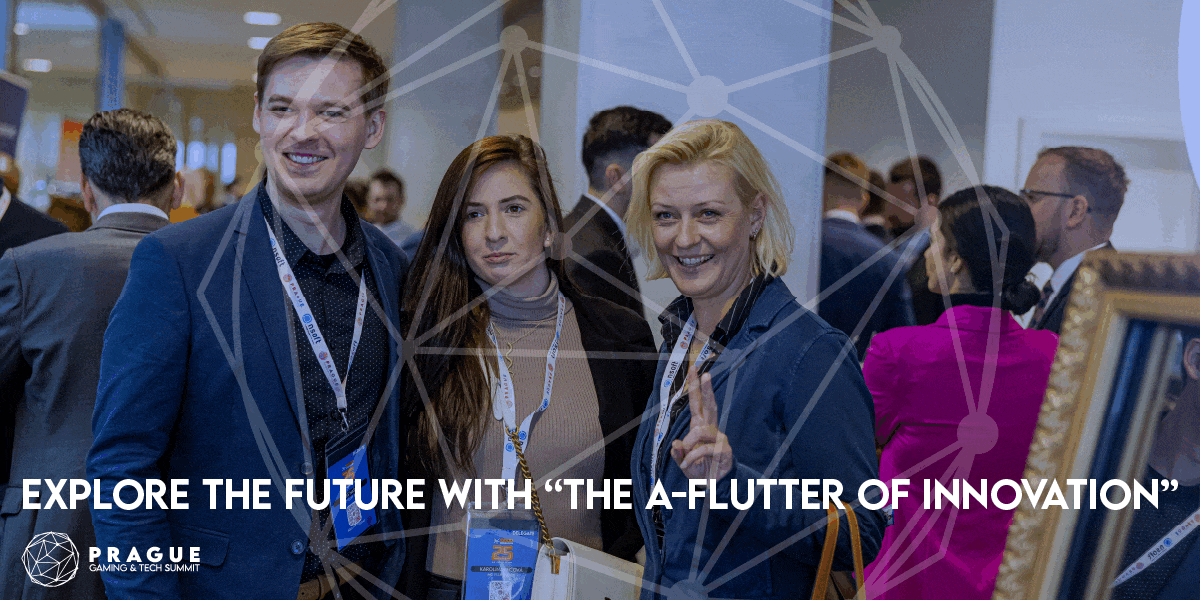Fintech PR
Red Hat Opens the Linux Experience to Every Enterprise, Every Cloud and Every Workload with Red Hat Enterprise Linux 8

 Reading Time: 8 minutes
Reading Time: 8 minutes
Red Hat, Inc. (NYSE: RHT), the world’s leading provider of open source solutions, announced at the RED HAT SUMMIT the general availability of Red Hat Enterprise Linux 8, the operating system designed to span the breadth of deployments across enterprise IT. For any workload running on any environment, Red Hat Enterprise Linux 8 delivers one enterprise Linux experience to meet the unique technology needs of evolving enterprises. From deploying new Linux workloads into production to launching digital transformation strategies, the next-generation enterprise is built on top of the world’s leading enterprise Linux platform.
Red Hat Enterprise Linux 8 is the operating system redesigned for the hybrid cloud era and built to support the workloads and operations that stretch from enterprise datacenters to multiple public clouds. Red Hat understands that the operating system should do more than simply exist as part of a technology stack; it should be the catalyst for innovation. From Linux containers and hybrid cloud to DevOps and artificial intelligence (AI), Red Hat Enterprise Linux 8 is built to not just support enterprise IT in the hybrid cloud, but to help these new technology strategies thrive.
As the importance of hybrid cloud and multicloud deployments grow, the operating system must evolve as well. According to IDC[1], 70 percent of customers already deploy multicloud environments and 64 percent of applications in a typical IT portfolio today are based in a cloud environment, whether public or private. Red Hat views the operating system as the keystone to this IT innovation and more, especially as Red Hat Enterprise Linux is poised to impact more than US$10 trillion in global business revenues in 2019[2], according to a Red Hat-sponsored IDC study.
Red Hat Enterprise Linux 8: Intelligent Linux for the hybrid cloud
For more than 15 years, Red Hat has helped enterprises innovate on Linux, first in their datacenters and now across the hybrid cloud. As datacenters grow in scale and scope and workload complexity builds, the skills required to deploy and maintain Linux-based production systems become increasingly critical. With the announcement of Red Hat Enterprise Linux 8, this intelligence and expertise is now built-in to Red Hat Enterprise Linux subscriptions by default with Red Hat Insights, delivering Red Hat’s Linux expertise as-a-service.
Red Hat Insights helps proactively identify and remediate IT issues, from security vulnerabilities to stability problems. It uses predictive analytics based on Red Hat’s vast knowledge of open technologies to help administrators avoid problems and unplanned downtime in production environments.
Managing systems dispersed across a variety of on-premise and cloud-based infrastructure can present a significant challenge to IT organizations. Red Hat Smart Management, a layered add-on for Red Hat Enterprise Linux, helps IT teams gain the benefits of hybrid cloud computing while minimizing its inherent management complexities. Combining Red Hat Satellite for on-premise systems management and cloud management services for distributed Red Hat Enterprise Linux deployments, Red Hat Smart Management provides rich capabilities to manage, patch, configure and provision Red Hat Enterprise Linux deployments across the hybrid cloud.
Red Hat Enterprise Linux 8: Blazing a faster path to modern applications
To meet evolving business demands, IT organizations are looking to new workloads, from artificial intelligence (AI) to the Internet-of-Things (IoT), to drive competitive advantages in crowded marketplaces. Linux provides the innovative muscle to power these differentiated services, but only Red Hat Enterprise Linux 8 delivers this innovation along with a hardened code base, extensive security updates, award-winning support and a vast ecosystem of tested and validated supporting technologies.
Red Hat Enterprise Linux has always been known as a stable and secure foundation for applications. However, in the past it was hard to get the most up-to-date languages and frameworks that developers wanted without compromising that stability. Red Hat Enterprise Linux 8 introduces Application Streams – fast-moving languages, frameworks and developer tools are updated frequently in this stream without impacting the core resources that have made Red Hat Enterprise Linux an enterprise benchmark. This melds faster developer innovation with production stability in a single, enterprise-class operating system.
Red Hat Enterprise Linux 8: Introducing a world of opportunity for everyone
Linux continues to be the number one operating system for developers building the next generation of enterprise applications. As these applications move into production, stability, enhanced security and testing/certification on existing hardware and environments become paramount needs. This shifts the onus from developers to operations teams and, paired with the trend of Linux being looked to as a primary platform for production applications, makes Linux administration and management skills critical for modern datacenters. Red Hat Enterprise Linux 8 is designed to lower the barrier to entry for Linux, enabling greater accessibility for Windows administrators, Linux beginners and new systems administrators without fear of the command line.
Red Hat Enterprise Linux 8 abstracts away many of the deep complexities of granular sysadmin tasks behind the Red Hat Enterprise Linux web console. The console provides an intuitive, consistent graphical interface for managing and monitoring Red Hat Enterprise Linux system, from the health of virtual machines to overall system performance. To further improve ease of use, Red Hat Enterprise Linux supports in-place upgrades, providing a more streamlined, efficient and timely path for users to convert Red Hat Enterprise Linux 7 instances to Red Hat Enterprise Linux 8 systems.
Red Hat Enterprise Linux 8 also includes Red Hat Enterprise Linux System Roles, which automate many of the more complex tasks around managing and configuring Linux in production. Powered by Red Hat Ansible Automation, System Roles are pre-configured Ansible modules that enable ready-made automated workflows for handling common, complex sysadmin tasks. This automation makes it easier for new systems administrators to adopt Linux protocols and helps to eliminate human error as the cause of common configuration issues.
Red Hat Enterprise Linux: Enabling the world of possibilities without sacrificing security
IT innovation is rooted in open source, with Linux often serving as the catalyst for major advancements in enterprise technology, from Linux containers and Kubernetes to serverless and AI. Backed by a more secure, hardened open source supply chain, Red Hat Enterprise Linux 8 helps pave the way for IT organizations to adopt production-ready innovation by deploying only the necessary packages for specific workloads. This enhances the adoption of emerging technologies while helping to minimize potential risk.
To enhance security, Red Hat Enterprise Linux 8 supports the OpenSSL 1.1.1 and TLS 1.3 cryptographic standards. This provides access to some of the strongest, latest standards in cryptographic protection that can be implemented system-wide via a single command, limiting the need for application-specific policies and tuning.
With cloud-native applications and services frequently driving digital transformation, Red Hat Enterprise Linux 8 delivers full support for the Red Hat container toolkit. Based on open standards, the toolkit provides technologies for creating, running and sharing containerized applications. It helps to streamline container development and eliminates the need for bulky, less secure container daemons.
Every datacenter. Every cloud. Every application.
Red Hat Enterprise Linux 8 drives a thriving partner ecosystem, as is expected of Red Hat Enterprise Linux, encompassing thousands of certified applications, Linux container images, hardware configurations and cloud providers. Building on the deep collaborations forged by Red Hat with other IT leaders and through extensive testing, Red Hat Enterprise Linux 8 drives added value for specific hardware configurations and workloads, including the Arm and POWER architectures as well as real-time applications and SAP solutions.
Red Hat Enterprise Linux 8 forms the foundation for Red Hat’s entire hybrid cloud portfolio, starting with Red Hat OpenShift Container Platform 4 and the upcoming Red Hat OpenStack Platform 15. Also built on Red Hat Enterprise Linux 8 is the forthcoming Red Hat Enterprise Linux CoreOS, a minimal footprint operating system designed to host Red Hat OpenShift Container Platform deployments.
Red Hat Enterprise Linux 8 is also broadly supported as a guest operating system on Red Hat hybrid cloud infrastructure, including Red Hat OpenShift 4, Red Hat OpenStack Platform 15 and Red Hat Virtualization 4.3.
The launch of Red Hat Enterprise Linux 8 also coincides with the general availability of the Red Hat Universal Base Image, a userspace image derived from Red Hat Enterprise Linux for building Red Hat certified Linux containers. The Red Hat Universal Base Image is available to all developers with or without a Red Hat Enterprise Linux subscription, providing a more secure and reliable foundation for building enterprise-ready containerized applications. Applications built with the Universal Base Image can be run anywhere with the benefits of the Red Hat Enterprise Linux life cycle and support from Red Hat when run on Red Hat Enterprise Linux or Red Hat OpenShift Container Platform.
Supporting Quotes
Paul Cormier, president, Products and Technologies, Red Hat
“Over the past two decades, we’ve seen Linux grow from a niche operating system to a default for enterprise datacenters. Red Hat Enterprise Linux has been at the forefront of this evolution, supporting nearly every workload and enterprise IT environment that our partners and customers can conceive. Red Hat Enterprise Linux 8 continues this work, but delivers more than just production-ready Linux; it provides a catalyst for innovation at cloud-scale. ”
Stefanie Chiras, vice president and general manager, Red Hat Enterprise Linux, Red Hat
“Innovation and Linux are inseparable – from building the Internet’s backbone to forming the first neurons of AI, Linux drives IT’s present and future. Red Hat Enterprise Linux 8 embraces the role of Linux as IT’s innovation engine, crystallizing it into an accessible, trusted and more secure platform. Spanning the entirety of the hybrid cloud, the world’s leading enterprise Linux platform provides a catalyst for IT organizations to do more than simply meet today’s challenges; it gives them the foundation and tools to launch their own future, wherever they want it to be.”
Fabio Martinez, senior manager, Architecture & Global Deployment, BBVA
“As we work to digitally transform our company to provide more services faster to our customers, we still need to have a stable, more secure operating system underpinning our IT environment. Red Hat Enterprise Linux 8 emphasizes providing innovation along with hardened code and security updates, key characteristics for us as we build our cloud-native strategy with Red Hat’s hybrid cloud technologies, including Red Hat OpenShift Container Platform.”
Jim Nauer, IT engineer, Case Western Reserve University
“Red Hat Enterprise Linux 8 Application Streams will allow us to provide our researchers an OS platform with not only an enterprise support lifecycle, but also access to up-to-date languages and tools in a way that interoperates easily with third-party source code.”
Tibor Incze, technical lead, Red Hat Enterprise Linux, Datacom Systems Ltd.
“The capacity for Red Hat Enterprise Linux 8 to not only run multiple versions of the same application or database on a specific operating system but to also have a clear and efficient way to manage them is a significant benefit to Datacom and our customers. As we continue to execute on our internal DevOps strategy, we’re also pleased to see improved container capabilities in the operating system and extensive automation, all factors that will help us bring differentiated services to our end users.”
Kevin Ichhpurani, corporate vice president, Partners Ecosystem, Google Cloud
“Google Cloud and Red Hat are deepening our collaboration to enable enterprise-grade solutions for customers with the availability of Red Hat Enterprise Linux 8 on Google Cloud. We’re excited to bring together our innovative technologies and services to help even more businesses gain the benefits of cloud.”
Arvind Krishna, senior vice president, Cloud and Cognitive Software, IBM
“As companies enter the next phase of their cloud journey, they need a hybrid cloud strategy that incorporates their own data centers with multiple private and public clouds in an open and secure way. IBM and Red Hat have been working together for more than 20 years to drive innovation through open source, first with IBM serving as an early supporter of Linux, helping to develop and grow it for the enterprise, and more recently to bring Kubernetes and hybrid cloud solutions to customers.”
Ashish Nadkarni, group vice president, Infrastructure Systems, Platforms and Technologies Group, IDC
“Enterprises need to build and modernize their infrastructure upon a more secure, stable, high-performing platform. Red Hat Enterprise Linux is the foundation for the enterprise hybrid cloud, designed to scale to meet the needs of organizations today and tomorrow with the same user experience regardless of the underlying infrastructure.”
John Gossman, distinguished engineer, Microsoft Azure
“We have seen growth in applications being deployed using Red Hat Enterprise Linux on Azure, including Microsoft SQL Server, for cloud-native, hybrid, and cloud migration scenarios. We’re excited to see what customers will create with Red Hat Enterprise Linux 8 on Azure with continued integrated support from Microsoft and Red Hat, as well as the operating system’s new capabilities to build applications for workloads like AI.”
Arlen Shenkman, executive vice president, Global Business Development and Ecosystems, SAP
“Red Hat Enterprise Linux 8 for SAP Solutions offers high availability capabilities, which are important for SAP workloads, and downtime is unacceptable for business critical applications such as S/4HANA. For more than two decades, we’ve worked with Red Hat on maintaining a stable, open foundation for SAP applications, helping our customers make smarter decisions, faster, across the hybrid cloud.”
Jason Beard, senior Linux administrator, Stream (Stream Energy)
“The energy market is complex and highly competitive, especially when it comes to being able to deliver updated information as quickly as possible to our customers. As an existing Red Hat Enterprise Linux user, the in-place upgrade capabilities of Red Hat Enterprise Linux 8 provide an opportunity for us to continue answering customer demand without taking systems offline to upgrade the operating system. We are also very interested in the container capabilities presented by Red Hat Enterprise Linux 8, especially as our development environment continues to evolve to drive additional business value.”
Additional Resources
- Read more about Red Hat Enterprise Linux 8
- Find out how Red Hat Services and Red Hat Consulting can help get the most out of Red Hat Enterprise Linux 8
- Read about how Red Hat’s partner ecosystem is supporting Red Hat Enterprise Linux 8
- Learn more about Red Hat Summit
- Follow @RedHatSummit or via the hashtag #RHSummit on Twitter
- Become a fan of Red Hat Summit on Facebook
Connect with Red Hat
- Learn more about Red Hat
- Get more news in the Red Hat newsroom
- Read the Red Hat blog
- Follow Red Hat on Twitter
- Join Red Hat on Facebook
- Watch Red Hat videos on YouTube
- Follow Red Hat on LinkedIn
SOURCE Red Hat, Inc.
Fintech
Fintech Pulse: Your Daily Industry Brief – April 4, 2025: Maseera, Adva, Plaid, Navi

In today’s ever-evolving fintech landscape, innovation is not merely a buzzword—it is the lifeblood of a dynamic industry that continuously reshapes global finance. This edition of Fintech Pulse: Your Daily Industry Brief examines the latest pivotal developments that are driving change and fostering new opportunities across financial technology sectors. From strategic acquisitions and regulatory shifts in the buy-now-pay-later (BNPL) sphere to significant funding rounds and data-driven market analyses, the fintech narrative is bursting with energy and potential. In this op-ed-style briefing, we explore how companies like Maseera, Adva, Plaid, and Navi are not only navigating but actively defining the contours of the future of finance.
Our coverage today is rooted in a blend of hard news and informed analysis, as we delve into critical developments reported by renowned sources across the fintech spectrum. Each segment of this article has been meticulously curated and analyzed to provide you with a clear perspective on where the industry stands and where it might be headed. As you read on, you’ll discover insights into strategic expansions, regulatory reforms, and investment trends that are set to shape the fintech environment in the months to come.
Breaking News: Maseera’s Strategic Acquisition of Adva in Egypt
In a significant move aimed at bolstering its regional presence, Maseera’s recent acquisition of Adva marks a major milestone in the expansion of fintech services in Egypt. The acquisition, reported by Tech African News (Source: Tech African News), is poised to redefine how digital financial solutions are deployed in emerging markets.
A New Chapter in Fintech Expansion
Maseera, a recognized name in the fintech arena, has long been at the forefront of digital transformation in finance. With this acquisition, the company not only secures a stronger foothold in Egypt’s burgeoning market but also signals its intent to broaden its portfolio of fintech solutions. The deal is expected to unlock new synergies between Maseera’s technology-driven approach and Adva’s established customer base and operational expertise.
The significance of this acquisition cannot be overstated. In emerging markets, where traditional banking infrastructures often lag behind technological advances, strategic partnerships and acquisitions like this one enable companies to leapfrog legacy systems. By integrating Adva’s services into its own ecosystem, Maseera is poised to offer a seamless, more efficient financial experience to millions of users who are eager for modern digital banking solutions.
Market Impact and Strategic Implications
From an investor’s perspective, the acquisition highlights the potential for exponential growth within the fintech sector, particularly in regions that are ripe for digital disruption. The move is expected to enhance Maseera’s competitive edge, enabling it to offer a broader suite of financial services that cater to both consumer and business needs. Moreover, this deal exemplifies the increasing trend of cross-border investments and strategic consolidations that are redefining the competitive landscape in fintech.
Financial analysts suggest that such strategic moves are critical in a sector where speed and innovation dictate market success. With regulatory frameworks in many emerging economies still in their nascent stages, the agility of fintech firms like Maseera provides them with a unique advantage. The integration of Adva’s operational prowess is likely to streamline processes and introduce innovative products that could significantly disrupt traditional banking paradigms.
Broader Economic and Social Implications
Beyond the immediate business implications, Maseera’s acquisition of Adva holds broader economic significance. As digital financial services become increasingly accessible, they play a pivotal role in driving financial inclusion. For a country like Egypt, which has a significant portion of its population still underbanked, the introduction of advanced fintech solutions can be transformative. It is anticipated that this move will not only boost economic growth but also foster greater transparency and efficiency in financial transactions, ultimately empowering individuals and businesses alike.
Navigating Regulatory Waters: The Future of BNPL in Asia
Regulatory oversight continues to be a critical component in the evolution of fintech, particularly in emerging sectors like BNPL. An insightful piece from Fintech News Singapore (Source: Fintech News Singapore) examines the challenges and opportunities that lie ahead for BNPL services in Asia.
The Rise of BNPL and Its Regulatory Challenges
BNPL has rapidly gained traction as a convenient payment method, particularly among younger consumers who favor flexibility over traditional credit lines. However, this rapid adoption has not come without its share of regulatory scrutiny. Policymakers in Asia are increasingly aware of the potential risks associated with BNPL, such as over-indebtedness and lack of consumer protection. As such, regulators are now tasked with striking a balance between fostering innovation and ensuring robust consumer safeguards.
The report emphasizes that the road ahead for BNPL regulation in Asia is complex. Authorities must navigate a landscape that is marked by diverse economic conditions and varying levels of regulatory maturity across different countries. The challenge lies in developing a framework that is both flexible enough to accommodate innovative business models and stringent enough to prevent systemic risks.
Impact on Fintech Companies and Consumers
For fintech companies operating in the BNPL space, the evolving regulatory environment represents both a challenge and an opportunity. On one hand, stricter regulations could potentially slow down the rapid expansion of BNPL services. On the other, a clear regulatory framework could help legitimize the sector, attract more institutional investors, and build greater consumer trust.
From an op-ed perspective, it is crucial to recognize that the proactive steps taken by regulators may ultimately serve to strengthen the fintech ecosystem. Clear guidelines can spur innovation by providing a stable operating environment, thereby reducing uncertainties that often deter investment. Additionally, enhanced consumer protection measures are likely to encourage more widespread adoption, as users gain confidence in the reliability and fairness of BNPL services.
Strategic Recommendations for Industry Players
Industry stakeholders are advised to engage proactively with regulators, contributing their insights to shape a balanced framework that supports both growth and consumer welfare. Fintech companies should invest in robust risk management systems and develop innovative compliance solutions to stay ahead of regulatory changes. Moreover, collaboration with financial institutions and technology partners will be crucial in navigating this evolving landscape successfully.
Plaid’s Robust Funding: Catalyzing Innovation in Digital Finance
In a display of strong market confidence, fintech firm Plaid recently secured a significant round of funding, a development that was detailed by Retail Banker International (Source: Retail Banker International). This funding milestone is not just a financial boost—it is a validation of Plaid’s strategic vision and its critical role in powering digital financial solutions.
The Funding Milestone and Its Significance
Plaid’s successful funding round reflects the broader trend of increased investment in fintech innovations that are transforming the financial services industry. The capital infusion is set to accelerate the company’s development of cutting-edge solutions, enabling it to expand its product offerings and enhance its technological infrastructure. For Plaid, this means a faster rollout of new features that will further streamline the integration of financial data into consumer and business applications.
Investors have shown considerable confidence in Plaid’s ability to navigate a competitive market by continually innovating and adapting to emerging trends. The funding round is indicative of the growing recognition that fintech platforms like Plaid are not merely technology providers, but pivotal enablers of financial inclusion and efficiency. The company’s focus on developing secure, scalable, and user-friendly products aligns perfectly with the evolving needs of modern financial consumers.
Strategic Implications for the Fintech Ecosystem
Plaid’s robust funding serves as a bellwether for the fintech industry, underscoring the importance of investment in technological innovation. With the influx of capital, Plaid is well-positioned to leverage emerging opportunities in areas such as open banking, digital identity verification, and data analytics. This strategic move is likely to have a ripple effect across the fintech ecosystem, inspiring other companies to accelerate their own innovation efforts.
From a broader perspective, the funding success of Plaid highlights the critical role that data integration plays in the digital finance landscape. In an era where data is a key asset, platforms that can seamlessly connect disparate financial systems and provide real-time insights will undoubtedly emerge as leaders in the industry. The funding round is a testament to the value that investors place on companies capable of delivering innovative, data-driven solutions that address the complex needs of today’s financial landscape.
Investor and Consumer Perspectives
For investors, Plaid’s funding round represents a compelling opportunity to capitalize on the rapid growth of digital finance. The company’s strategic vision and its ability to consistently deliver innovative products have positioned it as a standout performer in a crowded market. Meanwhile, consumers stand to benefit from enhanced digital banking experiences that are more secure, efficient, and tailored to their needs.
In this op-ed analysis, it is worth noting that the infusion of capital into fintech firms like Plaid is a harbinger of a more interconnected and data-driven financial future. As these companies continue to push the boundaries of what is possible, they are not only driving market growth but also setting the stage for a new era of financial empowerment.
Q1 Data Analysis: Unveiling Market Trends in Fintech
Data analytics remains one of the most powerful tools in the fintech arsenal. An in-depth analysis of Q1 data, as reported by Sifted (Source: Sifted), provides invaluable insights into the trends that are shaping the fintech landscape. This data-driven approach is critical for understanding market dynamics, forecasting future trends, and making informed strategic decisions.
Key Insights from Q1 Data
The Q1 analysis reveals several noteworthy trends that are influencing the direction of the fintech industry. Among the most significant findings is the rapid pace of digital adoption, particularly in the realm of mobile banking and digital payments. Consumers are increasingly relying on fintech solutions for everyday financial transactions, driven by the convenience and security that these platforms offer.
Furthermore, the data underscores the importance of personalized financial services. As fintech companies harness the power of big data and machine learning, they are better equipped to tailor their offerings to meet the specific needs of individual consumers. This trend towards personalization is not only enhancing customer satisfaction but also driving customer loyalty, as users increasingly expect financial services that are both innovative and user-centric.
Implications for Fintech Companies
For fintech companies, the insights gleaned from Q1 data are invaluable. They highlight the areas where consumer demand is strongest and where investments in technology can yield the highest returns. Companies that can effectively leverage data to anticipate consumer needs and streamline their operations will undoubtedly gain a competitive advantage in the market.
From an op-ed perspective, this data analysis serves as a call to action for fintech leaders. In a rapidly evolving landscape, the ability to harness data and derive actionable insights is a key differentiator. As fintech firms continue to refine their strategies based on data-driven insights, we can expect to see even more innovative products and services that are tailored to the evolving needs of a digital-savvy consumer base.
Broader Market Implications
The Q1 data analysis also provides a broader perspective on the overall health of the fintech industry. It suggests that, despite occasional market fluctuations, the long-term trajectory of digital finance remains robust. The continuous growth in user adoption, coupled with increased investments in technology and innovation, paints a promising picture for the future of fintech.
Moreover, the insights from this analysis have significant implications for policymakers and regulators. As the fintech ecosystem expands, it is crucial for regulatory frameworks to evolve in tandem, ensuring that they support innovation while safeguarding consumer interests. This delicate balance between innovation and regulation is a recurring theme in the fintech narrative, and the Q1 data analysis underscores its importance in shaping a resilient and forward-looking industry.
The Role of Regulators: Insights from Navi’s Perspective
In a candid commentary on the role of regulatory bodies, Navi’s founder, Sachin Bansal, recently shared his perspective on how regulators serve as pivotal stakeholders for fintech companies. This insight was featured on TradingView (Source: TradingView), where Bansal emphasized that “for a fintech, the regulator is its most important stakeholder.”
Understanding the Regulatory Mandate
Bansal’s remarks underscore the complex interplay between innovation and regulation. While fintech companies are celebrated for their disruptive potential and technological prowess, they also operate within a framework that requires strict adherence to regulatory standards. The delicate balance between pushing technological boundaries and complying with regulatory mandates is a recurring challenge for fintech firms.
From an analytical standpoint, Bansal’s perspective invites us to rethink the conventional narrative around regulation. Rather than viewing regulatory oversight as a hindrance to innovation, it can be seen as a necessary partner in ensuring that fintech growth is sustainable, secure, and ultimately beneficial to consumers. Regulatory bodies provide a critical check on potential excesses and help maintain market stability, thereby laying the groundwork for long-term industry success.
Strategic Benefits of Regulatory Collaboration
For fintech companies, forging a collaborative relationship with regulators is not just advisable—it is imperative. Companies that proactively engage with regulatory bodies are better positioned to influence policy development, secure favorable regulatory conditions, and ultimately, drive innovation in a responsible manner. Navi’s emphasis on the regulator as a key stakeholder highlights the need for fintech firms to view regulatory engagement as an integral part of their strategic planning.
In our opinion, the ability to navigate regulatory frameworks effectively is one of the most significant challenges facing fintech companies today. However, those that manage to do so can turn regulatory constraints into competitive advantages by building trust with consumers, enhancing operational resilience, and paving the way for sustained growth.
Looking Ahead: Regulatory Trends and Industry Evolution
As the fintech industry matures, we can expect to see continued evolution in regulatory approaches. Emerging technologies such as blockchain, artificial intelligence, and biometric authentication are prompting regulators to rethink traditional frameworks and develop innovative solutions that address the unique challenges posed by digital finance. This dynamic regulatory environment is both a challenge and an opportunity—a duality that industry leaders must navigate with agility and foresight.
Navi’s insights serve as a timely reminder that successful fintech companies must be as adept at regulatory navigation as they are at technological innovation. The future of fintech depends on a collaborative effort between innovators and regulators to create an ecosystem that is secure, transparent, and conducive to sustained growth.
Synthesis and Strategic Outlook: Fintech in the Global Arena
As we synthesize the insights from today’s top fintech stories, several common themes emerge. Innovation, strategic expansion, regulatory engagement, and data-driven decision-making are not isolated trends—they are interwoven elements that collectively define the modern fintech landscape. In our view, the interplay between these factors is shaping a future where digital financial services become increasingly sophisticated, accessible, and integral to everyday life.
Consolidation and Expansion in Emerging Markets
Maseera’s acquisition of Adva is a prime example of how strategic consolidations are driving fintech growth in emerging markets. By combining forces, companies can accelerate innovation, expand their reach, and deliver more comprehensive financial services to underserved populations. This model of strategic expansion is likely to be replicated in other regions, signaling a broader trend toward consolidation that will reshape competitive dynamics in global fintech.
The Dual Edge of Regulatory Oversight
Regulation in fintech is a double-edged sword. While the imposition of regulatory frameworks can sometimes slow down innovation, clear and forward-thinking regulatory policies are essential for ensuring long-term market stability and consumer protection. As evidenced by the discussions surrounding BNPL services in Asia and Navi’s regulatory insights, the future success of fintech hinges on finding a harmonious balance between fostering innovation and maintaining robust oversight.
The Power of Data-Driven Strategies
Data analytics is emerging as a cornerstone of fintech strategy. The insights derived from Q1 data analysis not only validate current trends but also provide a roadmap for future innovation. Companies that can harness the power of data to optimize their products, enhance user experiences, and streamline operations will lead the way in the next phase of digital finance evolution.
Investment and Capital Flow
Plaid’s recent funding round is a testament to the unwavering investor confidence in fintech innovation. Capital investments in fintech are accelerating the development of new technologies, driving competitive dynamics, and ultimately delivering better financial services to consumers worldwide. This influx of funding is instrumental in pushing the boundaries of what is possible in digital finance.
Analyzing the Broader Implications for the Fintech Ecosystem
As fintech continues to disrupt traditional financial systems, it is important to contextualize these developments within the broader economic, technological, and social landscape.
Economic Empowerment and Financial Inclusion
At its core, fintech is about democratizing access to financial services. Strategic moves like Maseera’s acquisition and Plaid’s funding highlight the potential for digital platforms to bridge gaps in financial inclusion, particularly in regions where conventional banking services have historically fallen short. By providing innovative solutions that are both accessible and user-friendly, fintech companies are empowering individuals and businesses to participate more fully in the digital economy.
Technological Disruption and Consumer Behavior
The rapid pace of technological innovation in fintech is reshaping consumer expectations. As users become accustomed to the seamless, on-demand services offered by digital platforms, traditional banks are being forced to adapt or risk obsolescence. The trends discussed in today’s briefing, from BNPL regulation to data analytics, underscore a broader shift toward consumer-centric financial services that prioritize efficiency, transparency, and personalization.
The Role of Strategic Leadership
In an industry marked by rapid change and intense competition, visionary leadership is essential. Companies that can anticipate market trends, navigate regulatory complexities, and drive technological innovation will emerge as the leaders of tomorrow. The examples discussed in today’s briefing—whether it’s Maseera’s bold acquisition strategy or Plaid’s ability to secure significant funding—serve as powerful case studies in strategic leadership within the fintech sector.
Global Collaboration and Cross-Border Innovation
The fintech landscape is inherently global, and today’s developments reflect the interconnected nature of digital finance. Cross-border partnerships and investments are becoming the norm, as companies seek to leverage international expertise and expand their reach. This global perspective is crucial for understanding how local innovations can have far-reaching impacts, influencing market dynamics and regulatory practices worldwide.
In-Depth Commentary: Navigating the Fintech Revolution
As we move further into 2025, the fintech revolution is gathering unprecedented momentum. The stories we have explored today are not isolated incidents but rather interconnected threads in a larger tapestry of digital transformation.
The Convergence of Technology and Finance
At the heart of the fintech revolution is the convergence of advanced technologies—such as artificial intelligence, blockchain, and big data—with traditional financial services. This convergence is creating new business models that challenge the status quo and offer consumers unprecedented levels of convenience and security. The recent developments we have covered illustrate this phenomenon vividly. Whether it is through strategic acquisitions, innovative funding strategies, or data-driven insights, fintech companies are reimagining the future of finance with each passing day.
A Call to Innovate and Collaborate
For industry insiders, the message is clear: innovation must be paired with collaboration. Fintech companies that work closely with regulators, technology partners, and even competitors are better positioned to drive sustainable growth. This collaborative spirit is not just a strategic imperative—it is the only viable path forward in a landscape that is as dynamic as it is competitive.
Reflecting on the Journey So Far
Looking back at the evolution of fintech over the past few years, one cannot help but marvel at the speed and scale of change. The rapid digital transformation witnessed across global markets is a testament to the relentless pursuit of innovation. However, as we celebrate these advancements, it is equally important to remain vigilant about the challenges that lie ahead, particularly in areas related to cybersecurity, consumer protection, and regulatory compliance.
Balancing Optimism with Prudence
In our opinion, the future of fintech is both bright and complex. While the opportunities are immense, so too are the challenges. Navigating this landscape requires a balanced approach—one that is marked by optimism, but also by a realistic appraisal of the risks and obstacles. As fintech continues to push the boundaries of what is possible, it is incumbent upon industry leaders to ensure that innovation does not come at the expense of security or consumer trust.
The Imperative of Continuous Learning
One of the most compelling lessons from today’s developments is the importance of continuous learning and adaptation. The fintech sector is characterized by rapid change, and what worked yesterday may not necessarily be effective tomorrow. As new technologies emerge and consumer behaviors evolve, staying informed and agile is the key to long-term success. This op-ed-style analysis is intended not only to inform but also to inspire a proactive approach to learning and adaptation within the fintech community.
Conclusion: The Future of Fintech and the Road Ahead
In conclusion, today’s briefing has provided a comprehensive look at some of the most important developments in the fintech industry. From Maseera’s bold acquisition of Adva in Egypt and the evolving regulatory landscape for BNPL in Asia to Plaid’s significant funding round and the illuminating Q1 data analysis, each story underscores the dynamic and multifaceted nature of digital finance today.
Key Takeaways
-
Strategic Expansion: Maseera’s acquisition of Adva is a powerful example of how strategic consolidation can accelerate market penetration in emerging economies, fostering financial inclusion and innovation.
-
Regulatory Evolution: The ongoing discussions around BNPL regulation in Asia highlight the need for a balanced approach that supports innovation while protecting consumers. Regulatory bodies are emerging as key partners in the fintech ecosystem.
-
Investment and Innovation: Plaid’s successful funding round is a clear signal that the market has strong confidence in the fintech revolution. Continued investments in digital finance are expected to drive further technological advancements and market growth.
-
Data-Driven Insights: The Q1 data analysis provides valuable insights into consumer trends and market dynamics, underscoring the importance of leveraging data to drive strategic decision-making in fintech.
-
The Role of Regulators: Navi’s emphasis on regulators as vital stakeholders reinforces the need for fintech companies to work closely with regulatory bodies to ensure sustainable, secure growth.
The Broader Vision
As we look ahead, it is evident that the fintech revolution is far from reaching its zenith. The convergence of technology, strategic investments, regulatory evolution, and data-driven insights is setting the stage for a future where digital financial services become increasingly integral to everyday life. Companies like Maseera, Plaid, and innovators like Navi are leading the charge, paving the way for a more inclusive, efficient, and dynamic financial ecosystem.
A Call to Action
For industry leaders, investors, and policymakers, today’s developments offer both inspiration and a roadmap for the future. The challenges are significant, but so too are the opportunities. By embracing innovation, fostering collaboration, and remaining steadfast in the pursuit of excellence, the fintech community can drive meaningful change that benefits not only the industry but society at large.
In this fast-paced era of digital transformation, staying ahead of the curve is essential. As we continue to witness rapid advancements and market shifts, the need for continuous learning, agile adaptation, and strategic foresight has never been more critical. The future of fintech is bright, but it will require a concerted effort from all stakeholders to navigate the complex, ever-changing landscape.
Final Thoughts
In wrapping up this comprehensive briefing, it is worth reiterating that the stories and trends discussed today are not isolated—they are part of a broader narrative of digital transformation. The fintech industry stands at the intersection of technology, finance, and innovation, and it is this convergence that promises to unlock unprecedented opportunities in the years to come. As we embrace this future, let us remain committed to the principles of innovation, collaboration, and responsible growth.
Thank you for joining us on this deep dive into the latest fintech developments. We look forward to bringing you more insightful analyses and op-ed-driven commentary as the fintech landscape continues to evolve.
The post Fintech Pulse: Your Daily Industry Brief – April 4, 2025: Maseera, Adva, Plaid, Navi appeared first on News, Events, Advertising Options.
Fintech PR
ANDURAND CAPITAL CEASES TO RELY ON ALTERNATIVE MONTHLY REPORTING SYSTEM; URGES SPROTT TO FIX SPROTT COPPER VEHICLE
The Units of Sprott Physical Copper Trust Trade at a Significant Discount to the Net Asset Value Per Unit with Inadequate Liquidity
Andurand Capital Ceases To Rely on the Alternative Monthly Reporting System in Respect of Sprott Physical Copper Trust
ST. JULIENS, Malta, April 4, 2025 /PRNewswire/ —
- Andurand Capital Management Ltd (“ACML“) believes that certain amendments to the Amended and Restated Trust Agreement of the Issuer, in particular to expand the restrictive redemption feature of the units of the Issuer (“Units”) consistent with the redemption features of other physical metals trusts managed by Sprott Asset Management LP, will help facilitate alignment between the price of the Units and the market price of physical copper.
- ACML believes that this will assist in addressing the underperformance of the Units, which trade at a significant discount to the net asset value per Unit and physical copper prices: as of market close on March 31, 2025, the price of each Unit traded at an average discount of ~18% to the net asset value per Unit over the preceding 30 trading days.
- The inception-to-date average traded value of the Units is <$200,000 per day, demonstrating the illiquidity of the Units for early investors.
MORE INFORMATION:
ACML, in its capacity as discretionary investment manager for Andurand Climate and Energy Transition Master Fund (the “Fund“), announces that it has elected to voluntarily cease filing reports under the Alternative Monthly Reporting System (“AMR System“) under Part 4 of National Instrument 62-103 – The Early Warning System and Related Take-Over Bid and Insider Reporting Issues (“NI 62-103“) in respect of Sprott Physical Copper Trust (the “Issuer“).
Immediately before and immediately after ACML elected to voluntarily cease filing reports under the AMR System on the date hereof, ACML, on behalf and for the sole benefit of the Fund, exercised control and direction over an aggregate 1,811,957 Units, representing approximately 16.4% of the issued and outstanding Units.
The Units described herein were acquired and partly redeemed in the ordinary course of business for the Fund’s investment purposes only and not for the purpose of exercising control or direction over the Issuer. ACML, on behalf and for the sole benefit of the Fund, may further purchase, hold, vote, trade, dispose or otherwise deal in Units or other securities of the Issuer in such manner as it deems advisable, including, without limitation, in order to benefit from changes in market prices of the Units, publicly disclosed changes in the operations of the Issuer, its business strategy or prospects, or from a sale or merger of the Issuer.
ACML may in the future determine to take any available course of action to address the foregoing concern or otherwise, which could involve one or more of the types of transactions or matters, or have one or more of the results, referred to in clauses (a) through (k) of item 5 of the report that ACML, on behalf of the Fund, will shortly file on Form 62-103F2 – Required Disclosure by an Eligible Institutional Investor under Section 4.3 in connection with this press release and in accordance with applicable securities laws (the “Report“), including requisitioning a meeting of unitholders of the Issuer, engaging with unitholders of the Issuer and soliciting proxies, or otherwise.
ACML’s registered office is located at The Hedge Business Centre, Level 5, Ir-Rampa ta’ San Giljan, Balluta Bay, St. Julian’s STJ 1062, Malta.
For further information or to receive a copy of the Report, please see the Issuer’s profile on SEDAR+ at www.sedarplus.ca, or contact ACML by phone at +356 2092 7400, Hakon Haugnes, or by email at contact@andurandcapital.com.
View original content:https://www.prnewswire.co.uk/news-releases/andurand-capital-ceases-to-rely-on-alternative-monthly-reporting-system-urges-sprott-to-fix-sprott-copper-vehicle-302421017.html

Fintech PR
BizClik Media Launches April Editions of Supply Chain Digital and Procurement Magazine
The April editions feature interviews with leading executives from PepsiCo, BMW Group, DP World, Exotec, Royal Mail, Coupa Software and more, offering insights into supply chain innovation, procurement transformation, and global logistics strategies.
LONDON, April 4, 2025 /PRNewswire/ — BizClik, the UK’s fastest-growing B2B digital media and publishing company, has released the April 2025 editions of Supply Chain Digital and Procurement Magazine. These titles remain essential reading for professionals across the global supply chain, logistics, and procurement industries, offering forward-looking features, in-depth interviews, and exclusive event coverage.
This edition’s lead interview features Rashid Abdulla, CEO for Europe at DP World, who shares how the company is driving supply chain transformation across the continent.
Other highlights include:
- Lauren Hymen, PepsiCo – On how digital transformation is empowering procurement
- Milan Nedeljkovic, BMW Group – Exploring the impact of Industry 4.0 on manufacturing
- Charles Hou, J&T Express Middle East – On revolutionising last-mile delivery
- Romain Moulin & Arthur Bellamy, Exotec – Discussing robotics, AI, and future-ready automation
- Mary Rollman, KPMG US – Analysing nearshoring strategies to navigate trade uncertainty
- Pierre-Yves Dermagne – On entering a new era of supplier diversity and compliance
- Top 10 Supply Chain Leaders – Featuring standout figures including Carol B. Tomé at UPS
- People Moves – Updates on Fernando Fernandez, Torsten Pilz, Gavin Chappell, and Adam Jones
This issue also includes highlights from Procurement & Supply Chain LIVE: Sustainability and previews of the upcoming shows in Chicago and London.
The April edition features a cover story with Lauren Hymen of PepsiCo, who shares how the company is leveraging digital tools to drive innovation and meet its sustainability goals.
Key content includes:
- Stuart Farrell & Natalia Merkulova, AllPoints Fibre Networks – On aligning procurement and finance for value creation
- Joao Paulo da Silva, Coupa Software – On leading digital transformation initiatives
- Ernest Rolfson, Finexio – Executive perspective on payment innovation
- Kristian O’Meara, JAGGAER – Exploring AI’s impact on supply chain visibility
- Top 10 Influential CPOs – Including Heather Ostis, Thomas Udesen, Amanda Davies, and more
- People Moves – Career updates from David Khuat-Duy, Franck Lheureux, James Jones and Willem Uijen
- Supplier Diversity – Insights from Kelly Grainger, Felizitas Lichtenberg and Rebecca Simpson
- Blockchain – Expert commentary from Scott Zoldi at FICO and Cristiano Ventricelli at Moody’s Ratings
Also featured: Highlights from Procurement & Supply Chain LIVE: Sustainability, and what to expect at upcoming events in Dubai and Chicago.
About BizClik
BizClik is one of the fastest-growing digital media companies in the UK, host to a growing portfolio of industry-leading global brands and communities.
BizClik’s expanding portfolio includes Technology, AI, FinTech, InsurTech, Supply Chain, Procurement, Energy, Mining, Manufacturing, Healthcare, Mobile, Data Centre, Cyber, and Sustainability.
For more information, please visit https://www.bizclikmedia.com/
View original content:https://www.prnewswire.co.uk/news-releases/bizclik-media-launches-april-editions-of-supply-chain-digital-and-procurement-magazine-302420939.html

-

 Fintech5 days ago
Fintech5 days agoFintech Pulse: Your Daily Industry Brief – March 29, 2025 Featuring: Charlie Javice, Rabobank, Mollie, Ivy, Barclays, and more
-

 Fintech3 days ago
Fintech3 days agoFintech Pulse: Your Daily Industry Brief – April 2, 2025 | Featuring Citi, Insigneo, Luma Financial Technologies, Weefin, Tirana Bank, Backbase
-

 Fintech4 days ago
Fintech4 days agoFintech Pulse: Your Daily Industry Brief – April 1, 2025 Featuring: Neobanks, Fintech Innovators, Spendr, Financial Finesses, Elga Credit Union, Pocketnest
-

 Fintech PR3 days ago
Fintech PR3 days agoAbeille Assurances Relies on Location Intelligence and Data Enrichment from Precisely to Manage Climate Risks and Enhance Customer Experience
-

 Fintech PR2 days ago
Fintech PR2 days agoKuCoin Surpasses 40 Million Registered Users, Demonstrating Commitment to Compliance and Innovation
-

 Fintech PR1 day ago
Fintech PR1 day agoNewmark’s First Quarter 2025 Financial Results Announcement to be Issued Prior to Market Open on Wednesday, April 30, 2025
-

 Fintech PR1 day ago
Fintech PR1 day agoANDURAND CAPITAL CEASES TO RELY ON ALTERNATIVE MONTHLY REPORTING SYSTEM; URGES SPROTT TO FIX SPROTT COPPER VEHICLE
-

 Fintech PR2 days ago
Fintech PR2 days agoERBC and Menarini Biotech Join Forces to Accelerate the Development of Biopharmaceuticals from Research to First-in-Human Clinical Trials
















